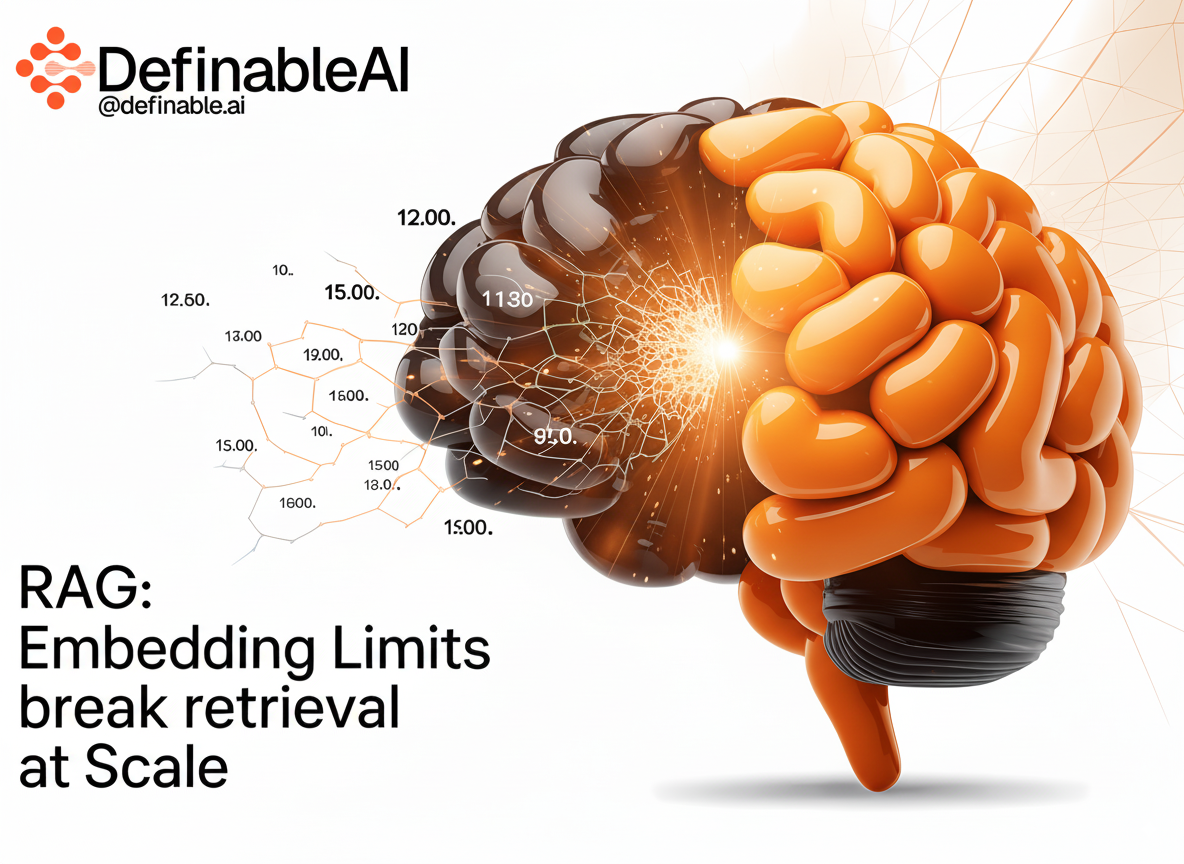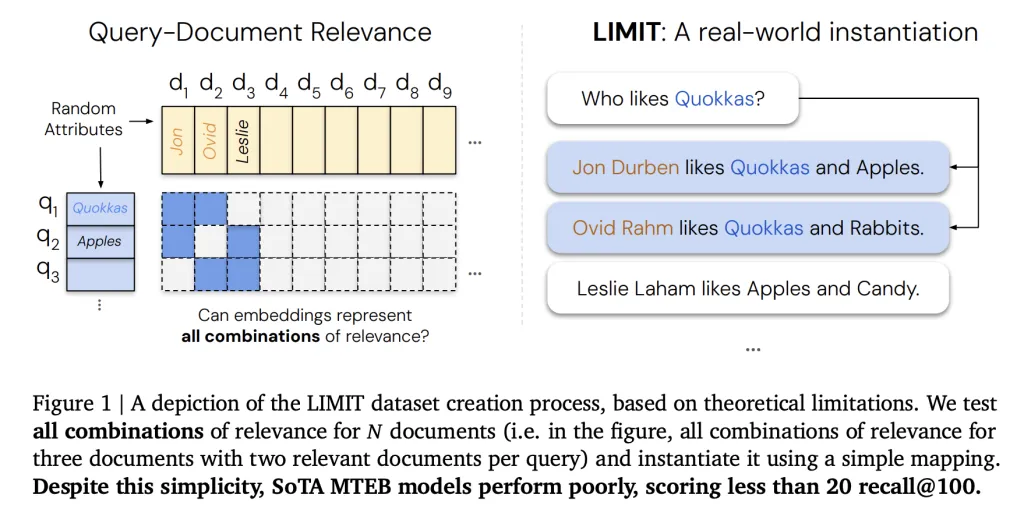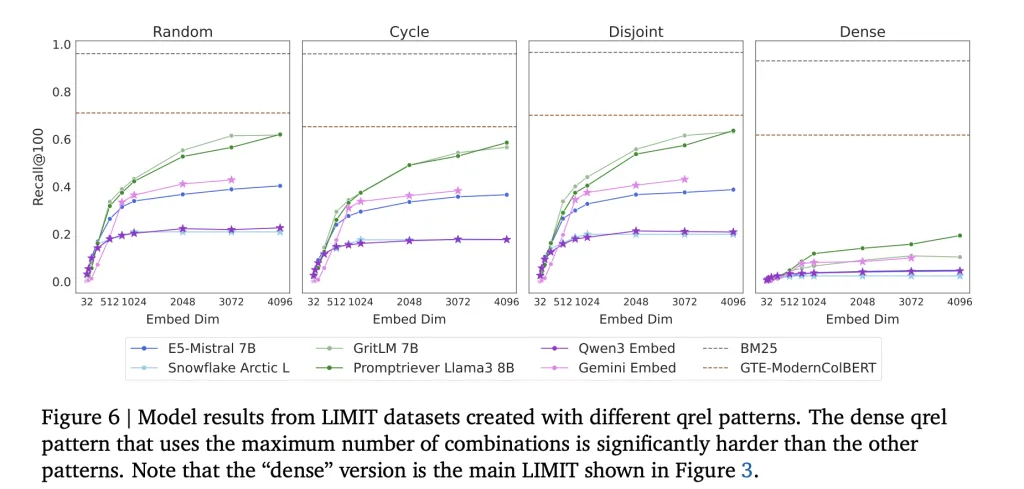Bots are running social media not humans.
you are being scammed, daily millions of bots do comments , likes etc.
Google DeepMind Exposes Critical RAG Flaw: Why Embeddings Fail at Scale


Google DeepMind Exposes Critical RAG Flaw: Why Embeddings Fail at Scale
RAG (Retrieval-Augmented Generation) systems typically use dense embedding models to transform both queries and documents into vectors of fixed dimensions. This technique has dominated AI applications for good reason, yet Google DeepMind's latest research exposes a fundamental design limitation that persists regardless of model size or training quality.
Embedding Dimension Limits: The Numbers That Matter
At the core of the issue is the representational capacity of fixed-size embeddings. An embedding of dimension d cannot represent all possible combinations of relevant documents once the database grows beyond a critical size. This follows from results in communication complexity and sign-rank theory.
These values are best-case estimates derived under free embedding optimization, where vectors are directly optimized against test labels. Real-world language-constrained embeddings fail even earlier.

Even with just 46 documents, no embedder reaches full recall, highlighting that the limitation is not dataset size alone but the single-vector embedding architecture itself.
In contrast, BM25, a classical sparse lexical model, does not suffer from this ceiling. Sparse models operate in effectively unbounded dimensional spaces, allowing them to capture combinations that dense embeddings cannot.

CCurrent RAG implementations typically assume that embeddings can scale indefinitely with more data. The Google DeepMind research team explains how this assumption is incorrect: embedding size inherently constrains retrieval capacity. This affects:
Even advanced benchmarks like MTEB fail to capture these limitations because they test only a narrow part/section of query-document combinations.
The research team suggested that scalable retrieval will require moving beyond single-vector embeddings:
The key insight is that architectural innovation is required, not simply larger embedders.

The research team’s analysis shows that dense embeddings, despite their success, are bound by a mathematical limit: they cannot capture all possible relevance combinations once corpus sizes exceed limits tied to embedding dimensionality. The LIMIT benchmark demonstrates this failure concretely:
Classical techniques like BM25, or newer architectures such as multi-vector retrievers and cross-encoders, remain essential for building reliable retrieval engines at scale.